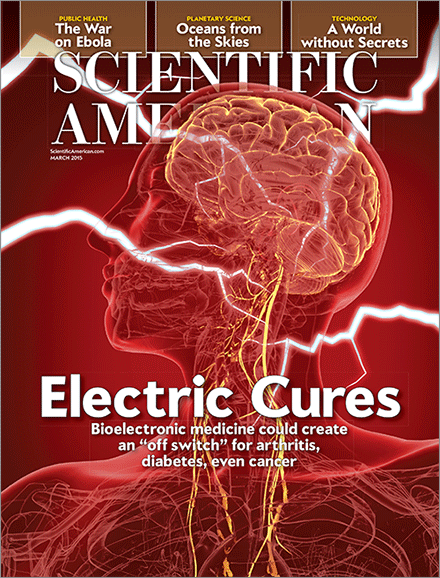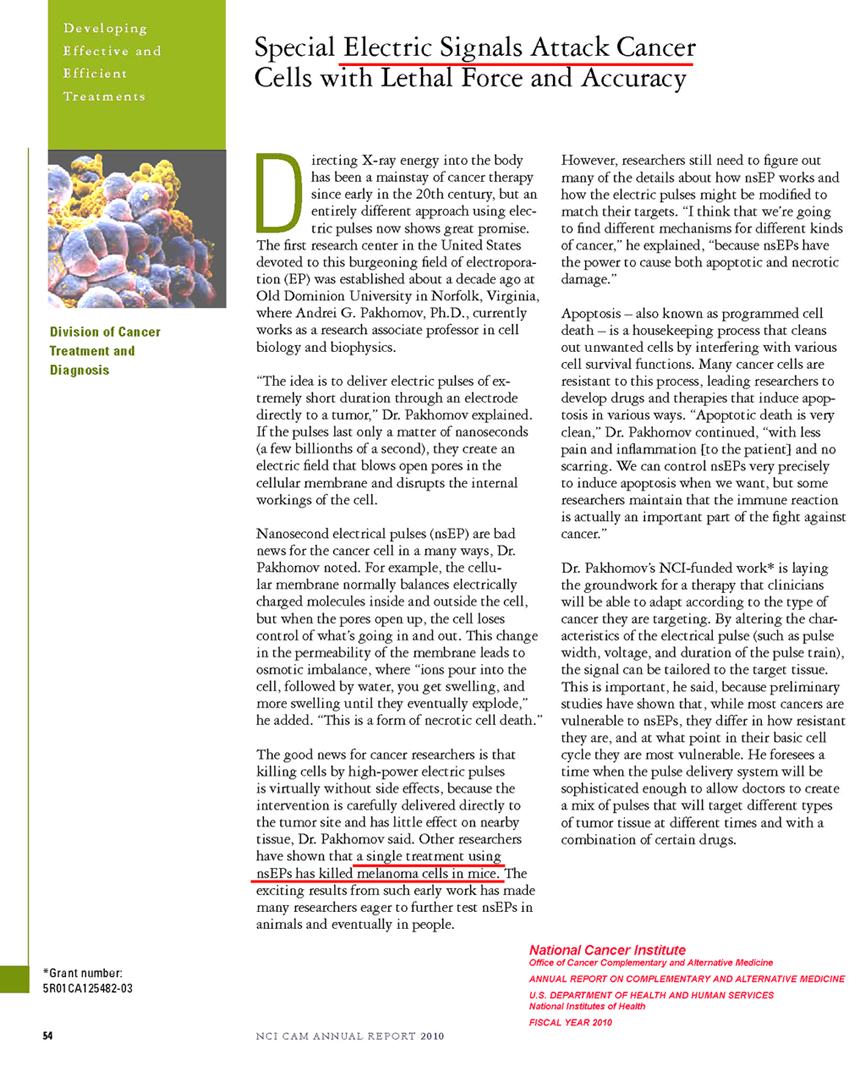PHYSICS OF
CANCER
Transmembrane Potential
(TMP)
and Status of the
Living Cell
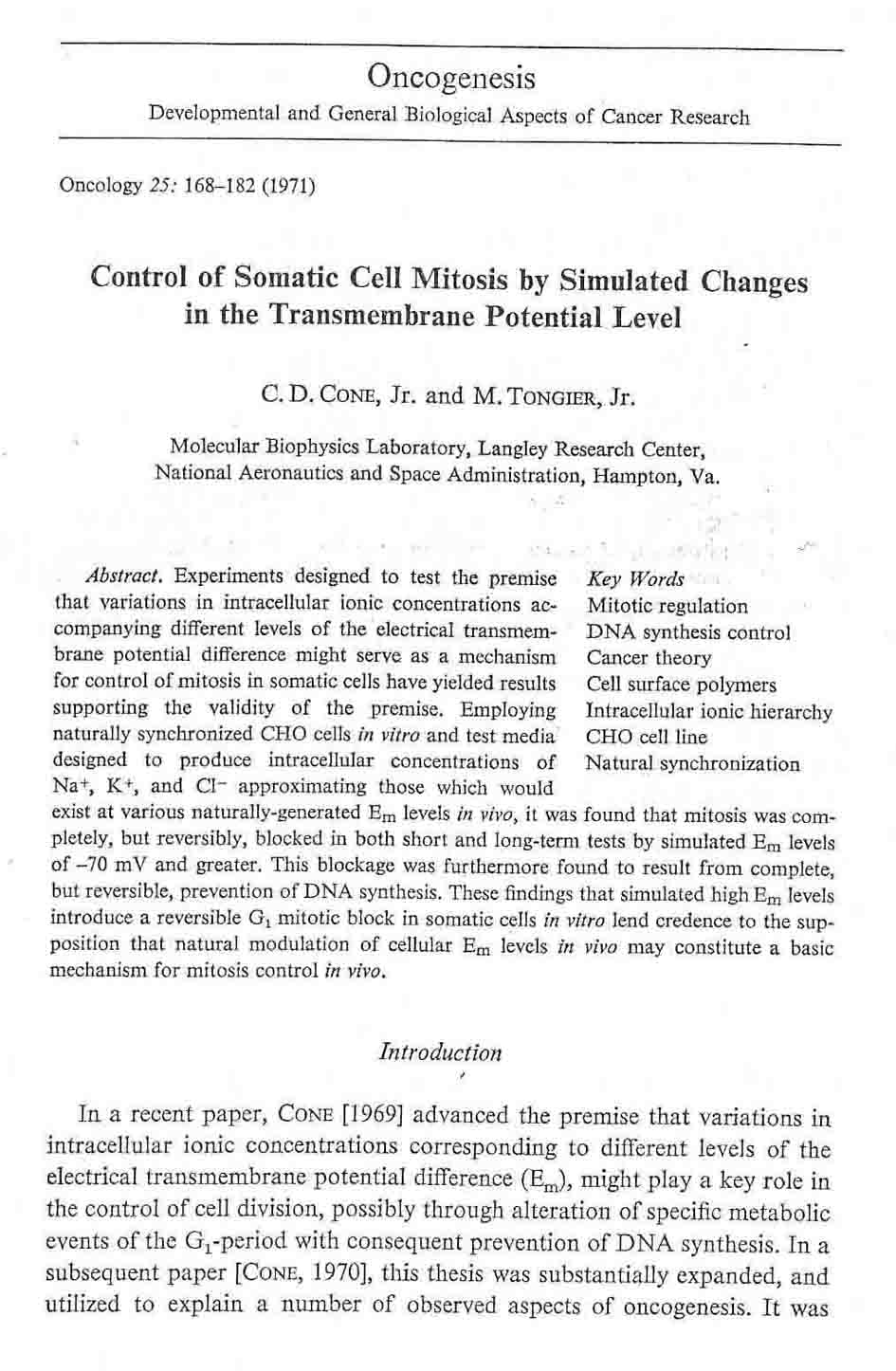 clicktoenlarge
clicktoenlarge
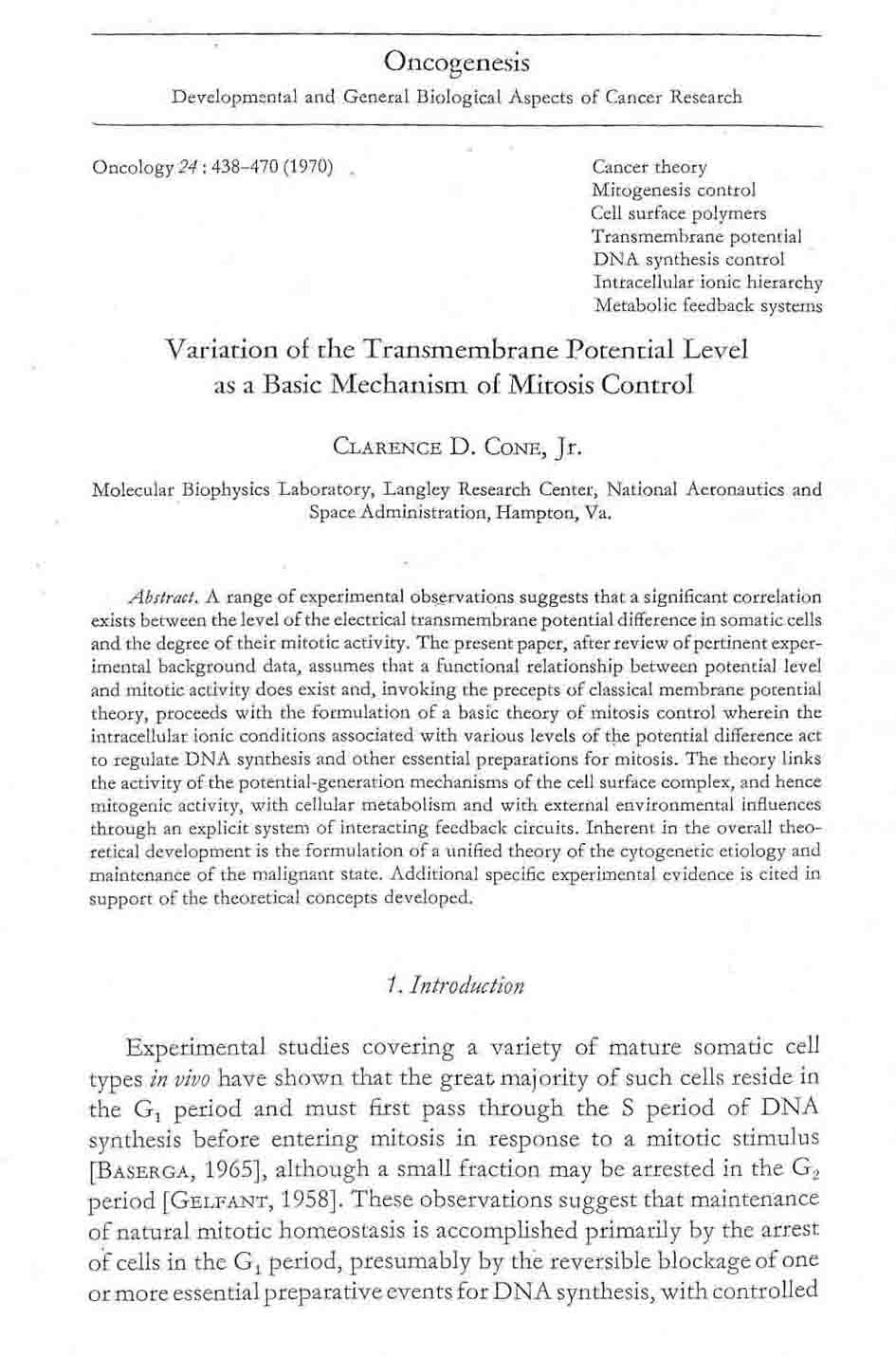 clicktoenlarge
clicktoenlarge
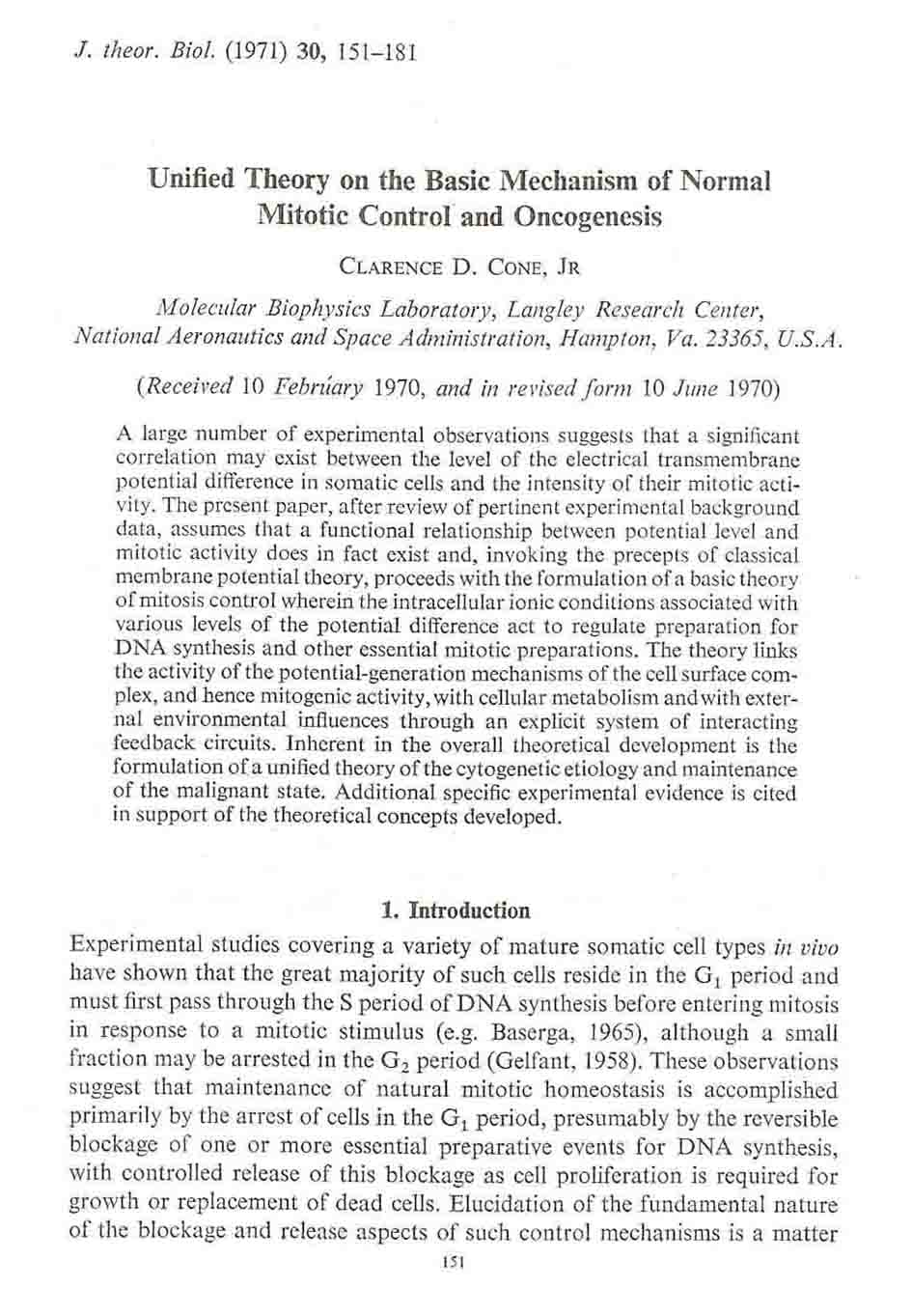 clicktoenlarge
clicktoenlarge
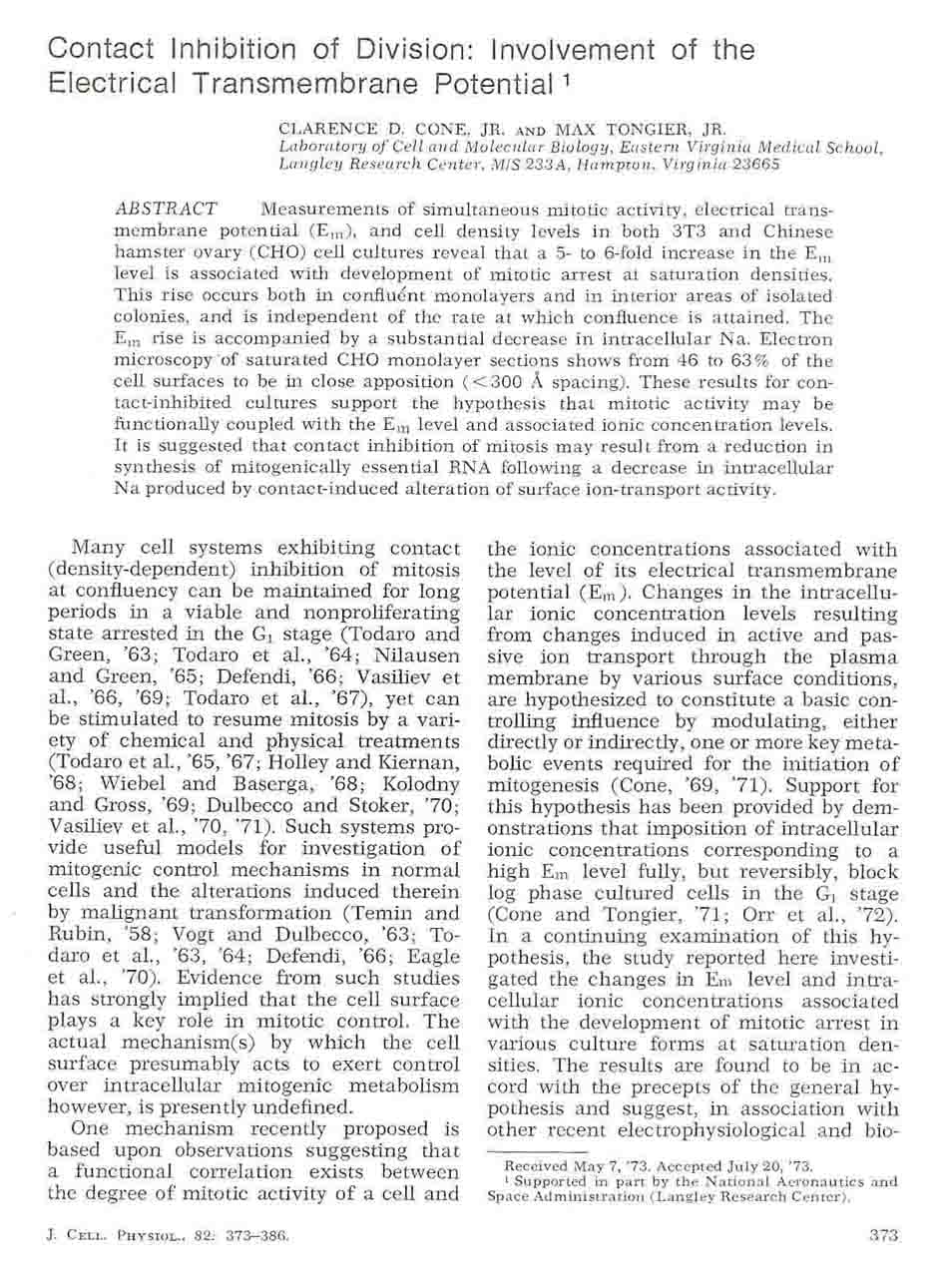 clicktoenlarge
clicktoenlarge
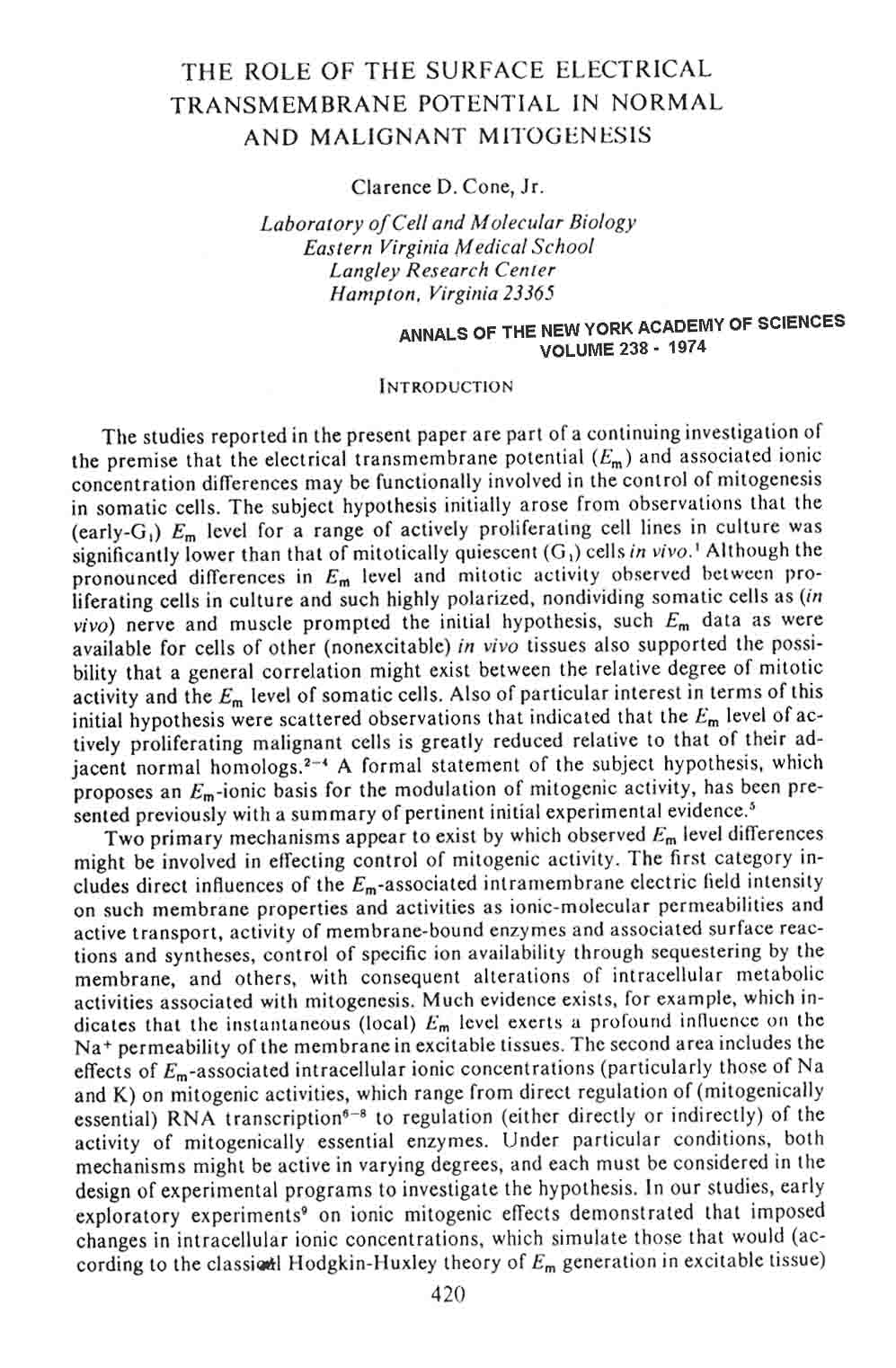 clicktoenlarge
clicktoenlarge
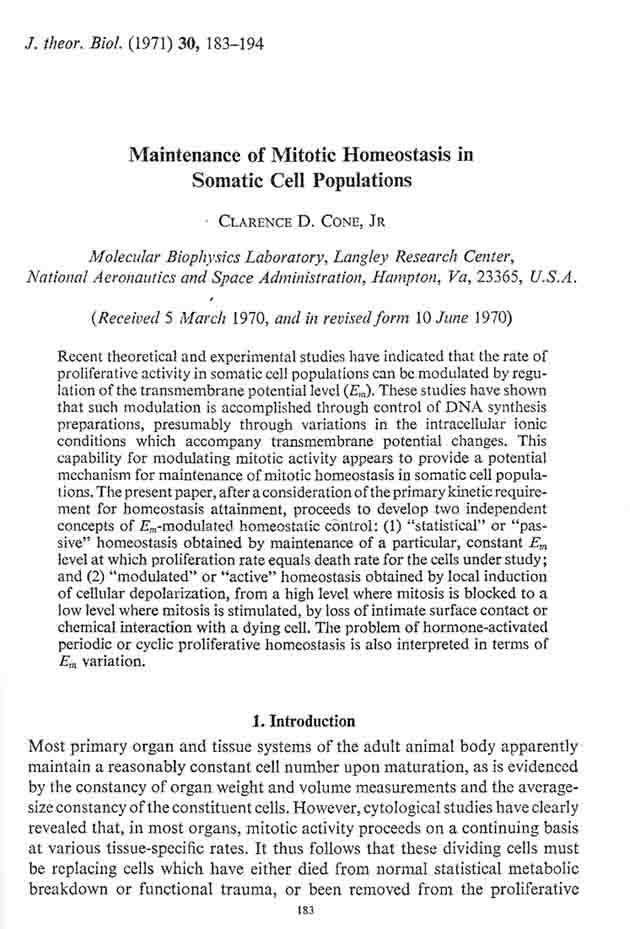 clicktoenlarge
clicktoenlarge
Biochim Biophys Acta.
1987 Apr 9;898(2):129-36.
Changes in cell surface charge and transmembrane potential accompanying
neoplastic transformation of rat kidney cells.
Price JA, Pethig R, Lai CN, Becker FF, Gascoyne PR,
Szent-Györgyi A.
Free flow electrophoresis measurements have been used to determine the surface
charge density of normal rat kidney (NRK) cells and a clone of NRK, designated
as 6m2, that exhibit a transformed phenotype at 33 degrees C and a
non-transformed phenotype at 39 degrees C. A clone of 6m2, designated 54-5A4,
which is transformed at both 33 degrees C and 39 degrees C was also studied. A
surface charge density of -1.42 microC/cm2 was obtained for the NRK and
non-transformed 6m2 cells at 39 degrees C, whereas at 33 degrees C values of
-1.85 and -1.78 microC/cm2 were determined for the transformed 6m2 and 54-5A4
cells, respectively. It was found that 72% of the increased charge that appeared
on the transformed 6m2 cells compared with the non-transformed 6m2 cells was
RNAase sensitive. The time-dependent decrease in surface charge that accompanied
the shift of the 6m2 cells from their transformed to non-transformed state was
found to mirror the increase in transmembrane potential previously reported
using a fluorescent dye technique, and was also comparable to the reported
temporal changes in their morphology and virally-coded protein content.
http://www.ncbi.nlm.nih.gov/sites/entrez?Db=PubMed&Cmd=ShowDetailView&TermToSearch=3828335&ordinalpos=1&itool=EntrezSystem2.PEntrez.Pubmed.Pubmed_ResultsPanel.Pubmed_RVDocSum
PMID: 3828335 [PubMed - indexed for MEDLINE]
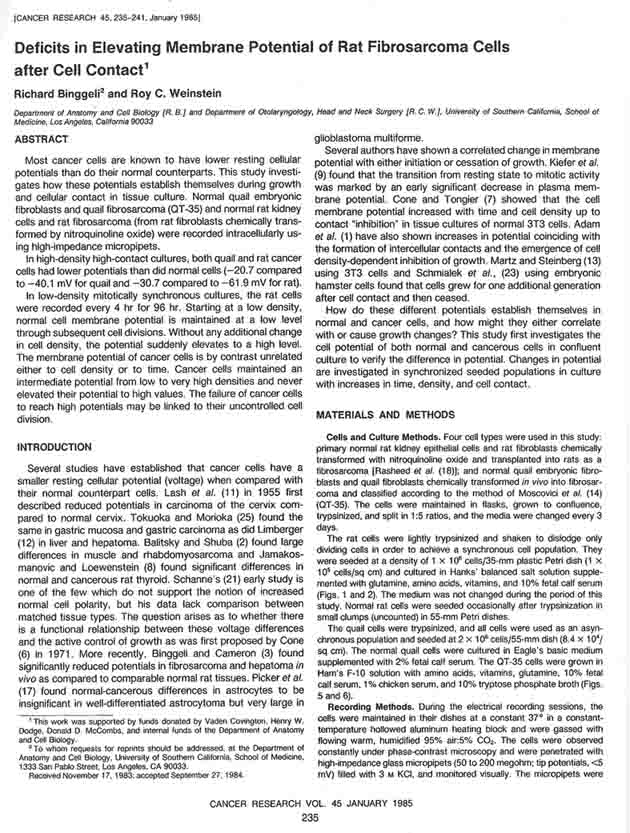 clicktoenlarge
clicktoenlarge
see also : Electrical
Potential Measurements and Cancer
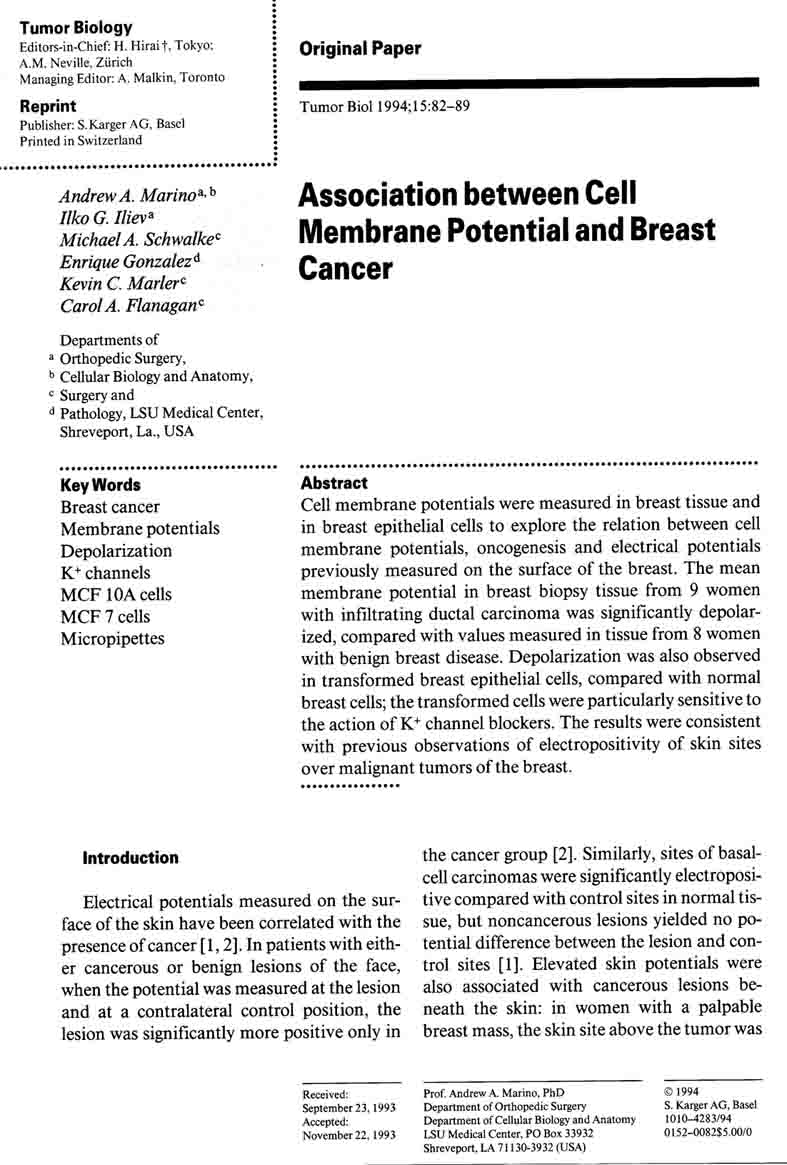 clicktoenlarge
clicktoenlarge
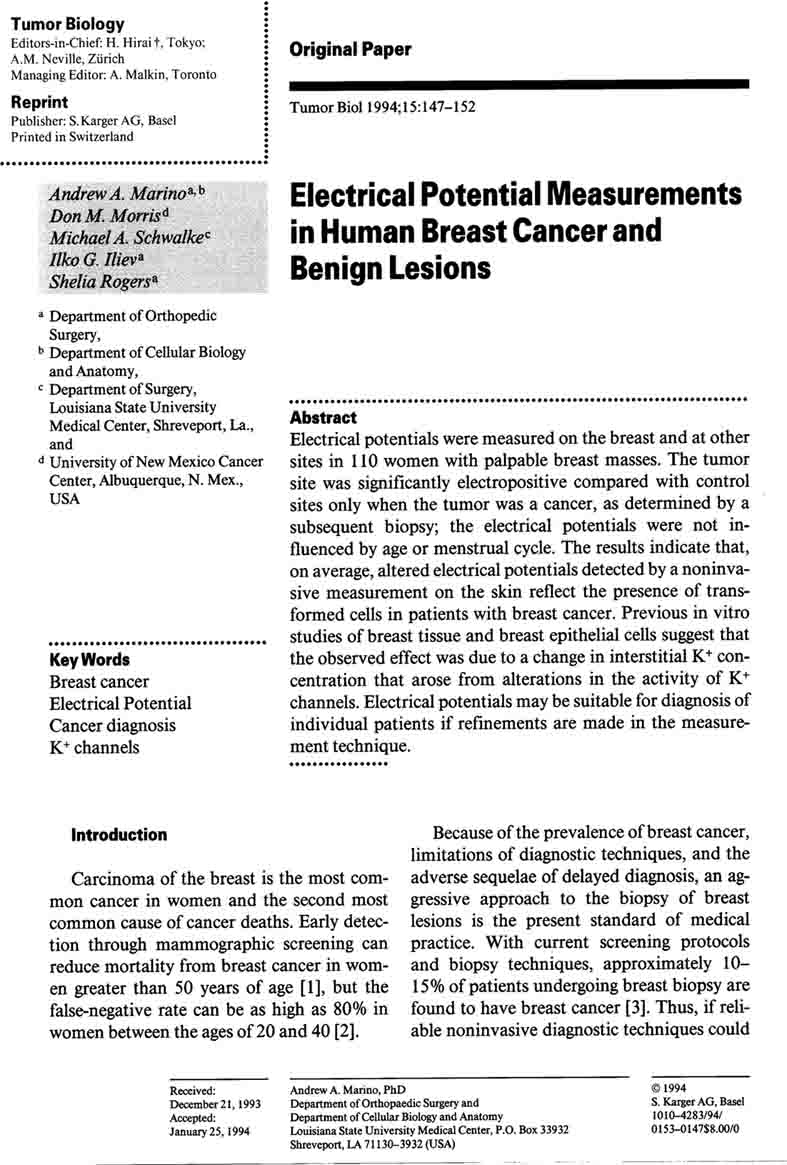 clicktoenlarge
clicktoenlarge
Lancet.
1998 Aug 1; 352(9125) :
359-63.
Electropotential measurements as a new diagnostic modality for breast cancer
Cuzick J, Holland R, Barth V, Davies R, Faupel M, Fentiman I, Frischbier
HJ, LaMarque JL, Merson M, Sacchini V, Vanel D, Veronesi U.
Imperial Cancer Research Fund, London, UK.
j.cuzick@icrf.icnet.uk
BACKGROUND: Proliferative changes in breast epithelium are an intrinsic aspect
in the development of breast cancer, and result in regions of epithelial
electrical depolarisation within the breast parenchyma, which can extend to the
skin surface. Diagnostic information might be obtained from a non-imaging and
non-invasive test based on skin-surface electropotentials. METHODS: In 661
women, scheduled for open biopsy at eight European centres, we studied whether
measurements of breast electrical activity with surface sensors could
distinguish benign from malignant breast disease. A depolarisation index was
developed. RESULTS: We found a highly significant trend of progressive
electrical changes according to the proliferative characteristics of the
biopsied tissue. Discriminatory information was obtained in both premenopausal
and postmenopausal women, and the index was not related to age. The best test
performances were for women with palpable lesions. The median index was 0.398
for non-proliferative benign lesions, 0.531 for proliferative benign lesions,
and 0.644 for cancer (ductal carcinoma-in-situ and invasive). A specificity of
55% was obtained at 90% sensitivity for women with palpable lesions when a
discriminant based on age and the depolarisation index was used. INTERPRETATION:
This new modality may have diagnostic value, especially in reducing the number
of unnecessary diagnostic tests among women with inconclusive findings on
physical examination. Understanding and control of the biological variability of
these electrical phenomena will be important in the improvement of this test.
Studies in populations with a lower cancer prevalence are needed to assess
further the diagnostic value of this approach.
http://www.ncbi.nlm.nih.gov/sites/entrez?cmd=Retrieve&db=PubMed&list_uids=9717923&dopt=AbstractPlus
PMID: 9717923 [PubMed - indexed for MEDLINE]
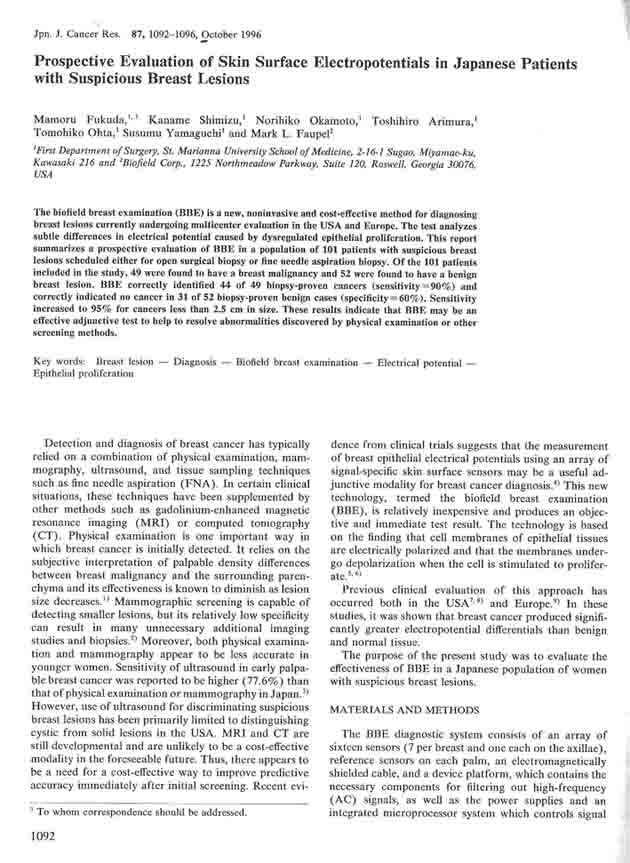 clicktoenlarge
clicktoenlarge
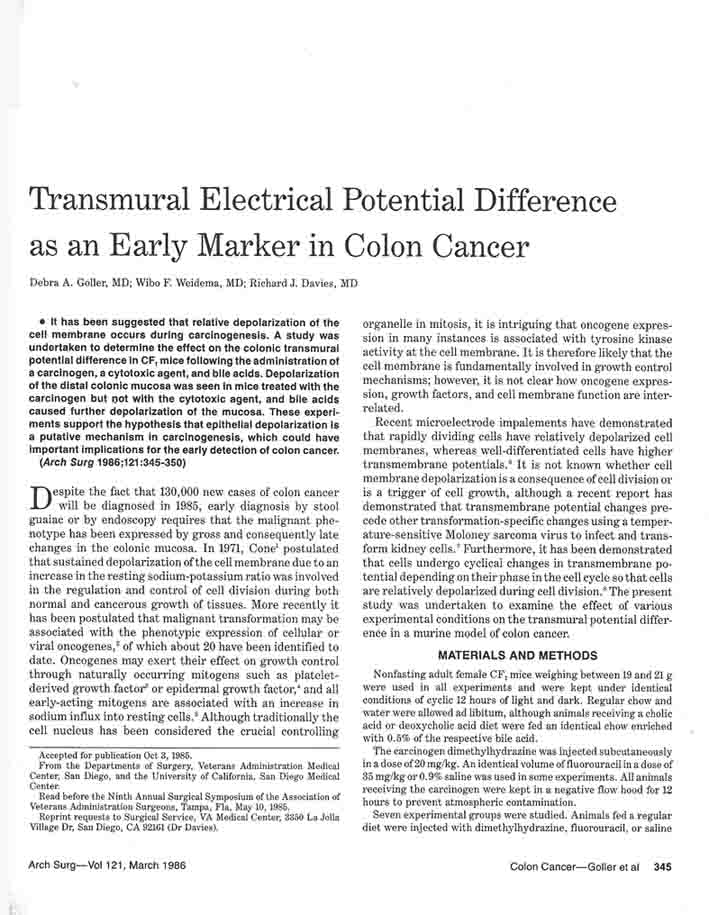 clicktoenlarge
clicktoenlarge
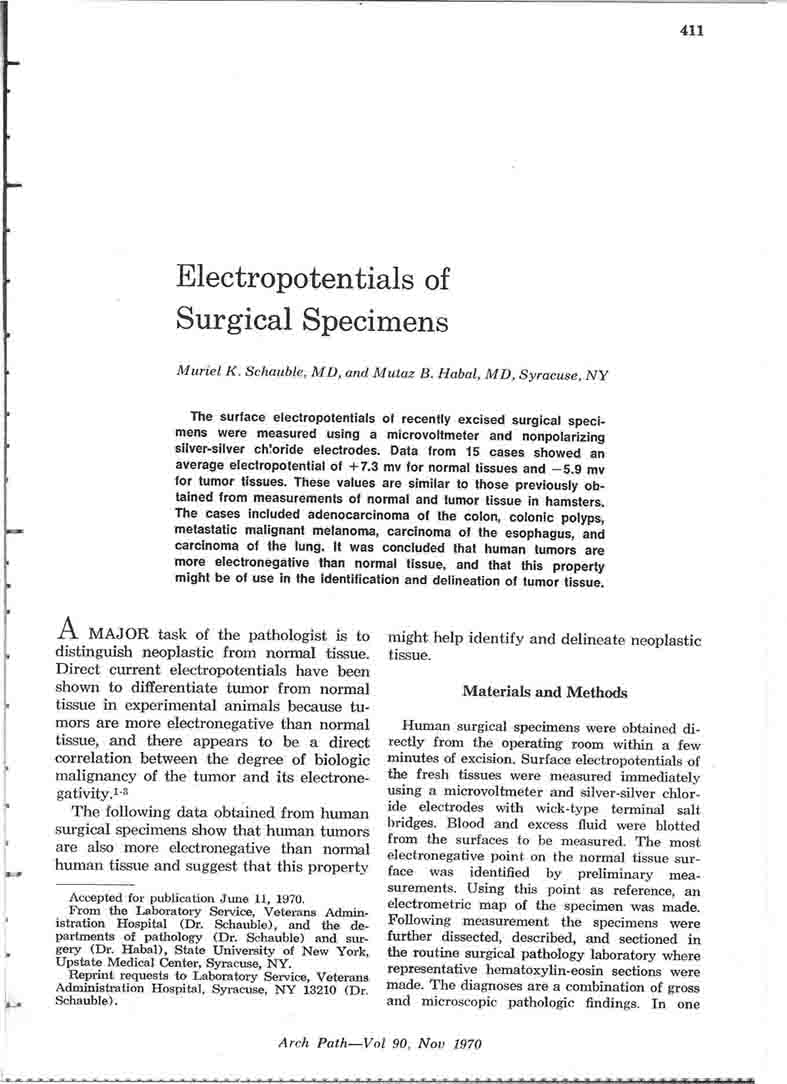 clicktoenlarge
clicktoenlarge
HAROLD SAXTON BURR
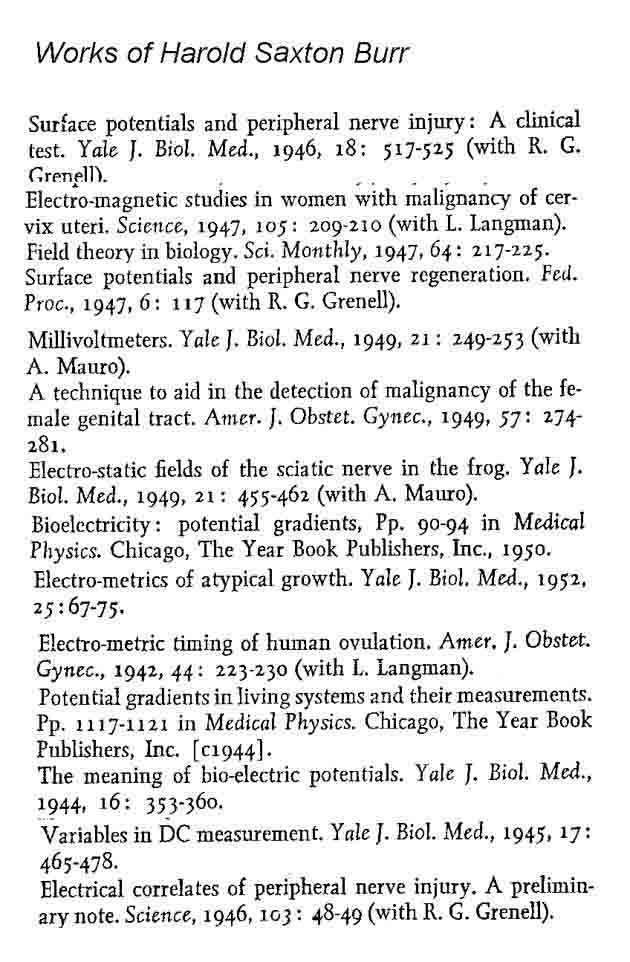 clicktoenlarge
clicktoenlarge
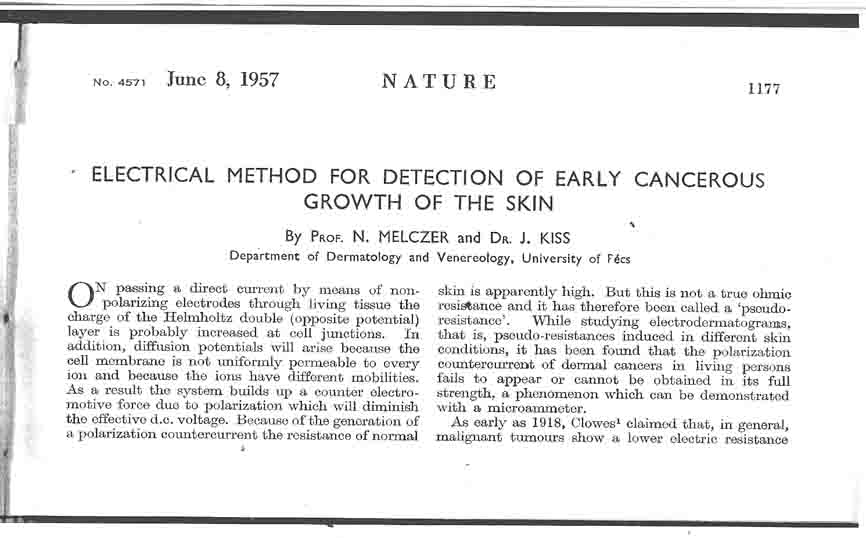 clicktoenlarge
clicktoenlarge
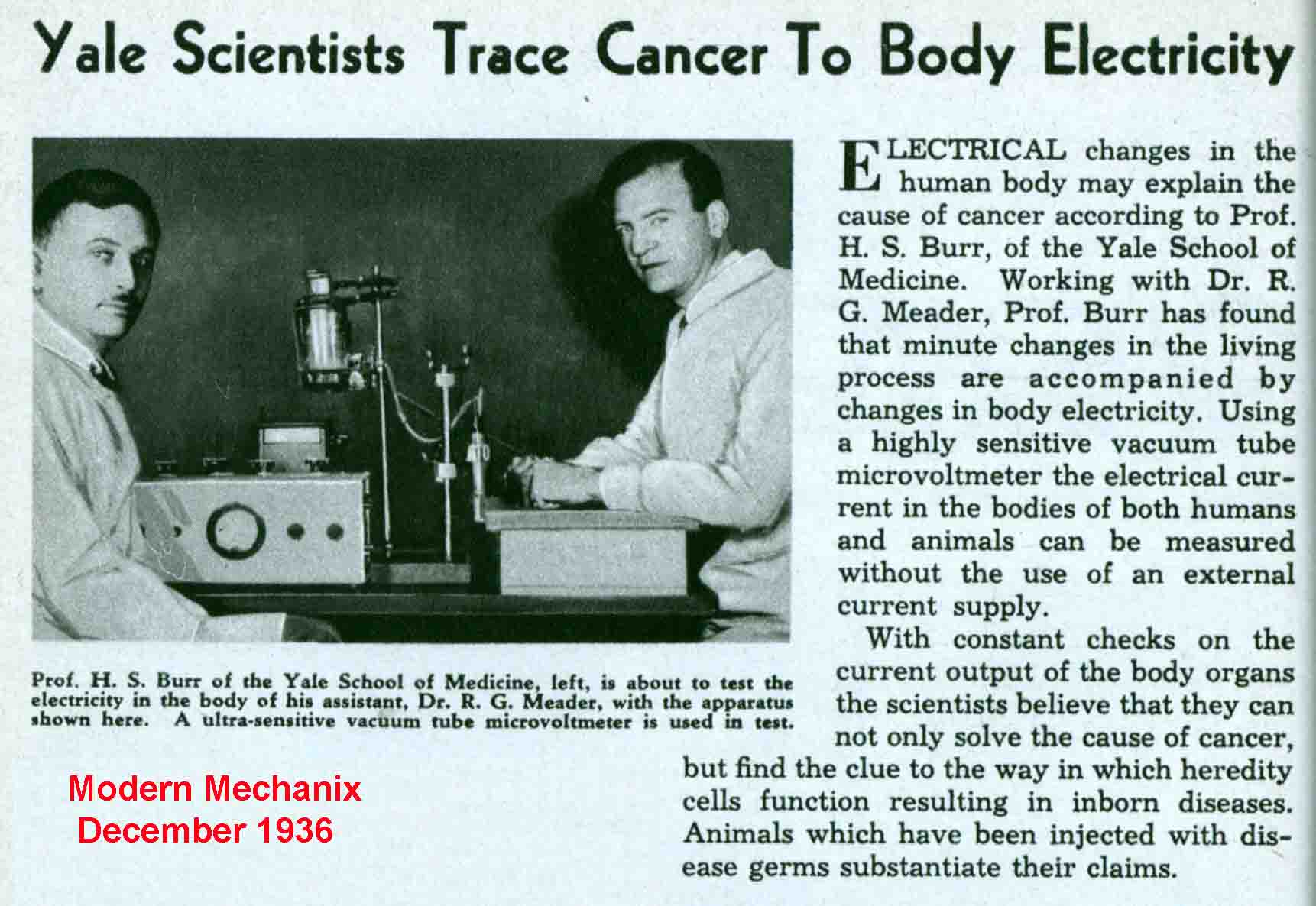
of related interest :
Magnets and Bioelectricity In Tumor Control
http://russtanner.com/Cancer/AmericanBiologics/MagnetsAndBioelectricityInTumorControl_Page_1.html
http://russtanner.com/Cancer/AmericanBiologics/MagnetsAndBioelectricityInTumorControl_Page_2.html
=============================================================================================
 clicktoenlarge
clicktoenlarge
 clicktoenlarge
clicktoenlarge
